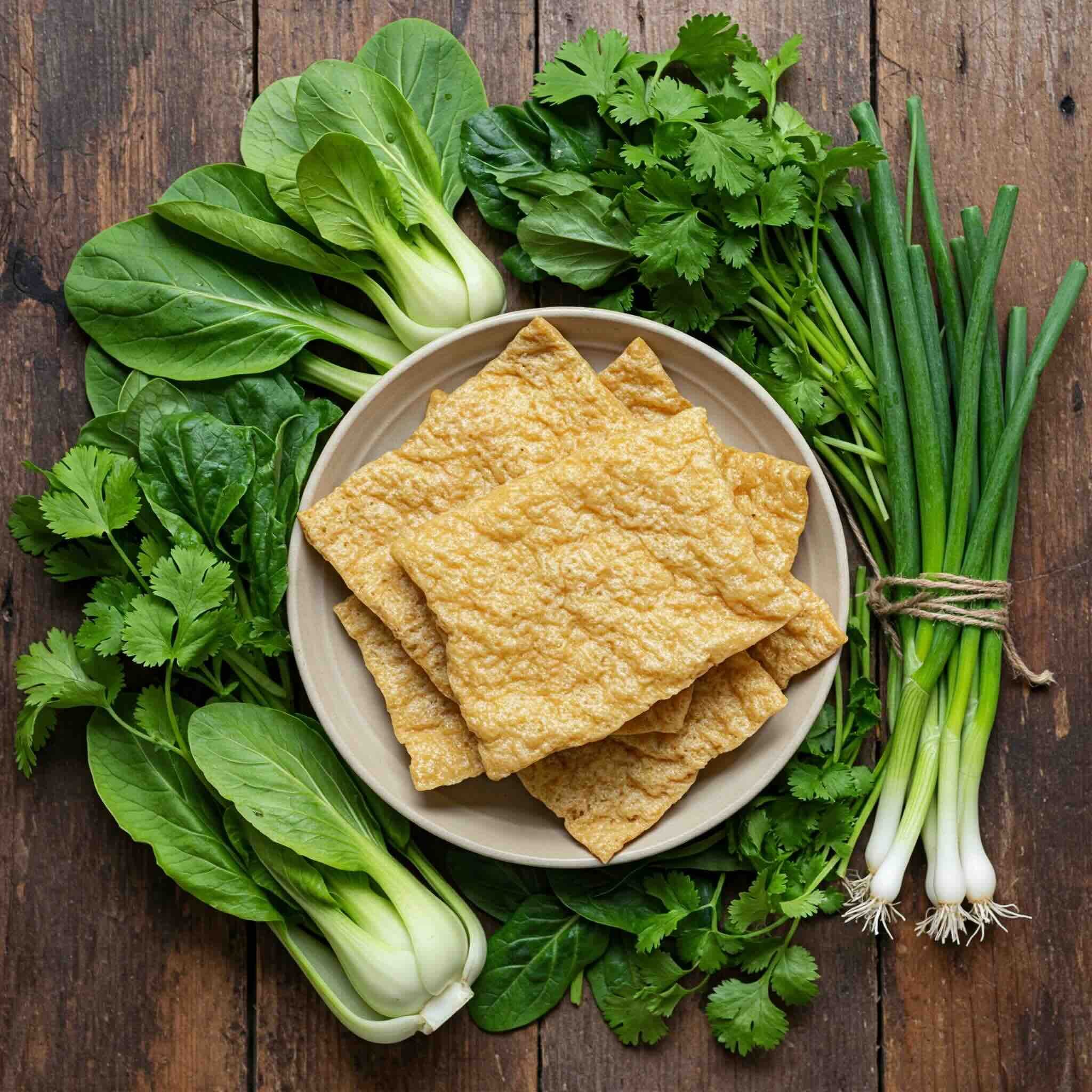Mastering Dried Bean Curd – Rehydrate and Cook Like a Pro
Dried bean curd is tofu’s lesser-known cousin — firmer, chewier, and packed with protein. Whether you know it as yuba, fuzhu, tofu knots, or pressed tofu sheets, these pantry-stable soy products are flavour magnets once you know how to prep them.
This guide breaks it down clearly: how to rehydrate, cook, and store dried bean curd for the best texture, flavour, and safety.
🍥 What Is Dried Bean Curd?
Dried bean curd, sometimes called tofu skin, isn’t the same as block tofu. It’s made by boiling soy milk and collecting the protein-lipid film (yuba) from the surface. This film is then dried into sheets, sticks (fuzhu), or knots. Some products labelled "tofu skin" are actually pressed tofu sheets, not yuba — so understanding the difference helps with prep.
Main Forms:
Yuba Sheets (千张 / 腐皮): Thin, flexible sheets from fresh soy milk surface.
Fuzhu (腐竹): Dried rolled sticks or bundles of yuba.
Tofu Knots: Tied strips of dried yuba, chewy and great in stews.
Pressed Tofu Sheets: Made by pressing tofu into dense, firm sheets, then drying them. Firmer than yuba.
🧠 Pro Insight: Yuba is not technically tofu — it forms without a coagulant, making it unique in flavour and structure.
💧 Rehydrating Dried Bean Curd
The biggest mistake? Treating all dried bean curd the same.
Each type absorbs water differently. Texture matters more than the clock — let touch guide you.
General Soaking Times:
✅ Rapid Tip: Add a small pinch of baking soda (~⅛ tsp per litre) to speed up soaking for fuzhu. It breaks down pectin and mildly denatures proteins, softening the texture faster, especially helpful if you’re short on time.
⚠️ Caution: Baking soda can affect taste and reduce certain B vitamins (e.g., thiamine, riboflavin). Always rinse well after soaking.
⏱️ Trust the texture more than the clock. Rub between your fingers — if it still feels leathery, soak longer. Inner layers of fuzhu may take time to soften.
🔥 Cooking Techniques
Once rehydrated, dried bean curd transforms with heat. It’s like a sponge — ready to absorb flavour if cooked right.
Best Matches by Type:
Yuba Sheets: Great for steaming, stir-fries, or wrapping.
Fuzhu: Ideal for braising, soups, or slow simmering in flavourful broths.
Tofu Knots: Hold shape in stews, curries, or deep-fried.
Pressed Sheets: Work well in pan-searing, salads, or sandwich fillings.
🥢 Pro Tip: Flavour needs heat. Let bean curd simmer or sauté long enough to absorb your sauce — don’t just toss it in last-minute.
🧂 Common Mistakes to Avoid
Under-soaking fuzhu: Inner layers stay chewy or hard.
Overcooking: Leads to a rubbery texture.
Not seasoning enough: Bean curd is neutral — go bold.
Skipping the rinse after baking soda soak: Can cause off-flavours.
Overcrowding in pan: Prevents browning and texture development.
📦 Storage & Food Safety
Dry Storage:
Store sealed dried bean curd in a cool, dry place for up to a year.
Once opened, transfer to an airtight container and use within 3–6 months.
After Rehydration:
Store soaked bean curd in the fridge and use within 2–3 days.
Do not leave at room temperature for extended periods — rehydrated soy is protein-rich and prone to bacterial growth.
⚠️ Food Safety Warning: Rehydrated soy products can support harmful bacteria like Clostridium botulinum and Bacillus cereus if not refrigerated. Always keep cold and discard if slimy or off-smelling.
🥶 Freezing: Rehydrated yuba is typically not frozen due to texture damage, but some cooks freeze it intentionally to create a sponge-like chew for soaking up sauces. Just be aware of the trade-off.
🧪 Nutrition Snapshot (Dried Yuba)
👆 Actual values vary by brand. After rehydration, nutrient values per serving decrease due to water absorption.
🌱 Final Takeaway
Dried bean curd is one of the most underrated whole-food soy products — easy to store, wildly versatile, and deeply satisfying when cooked well.
Mastering its texture takes practice, but once you feel the difference between leathery, supple, and silky, you’ll never look at tofu skins the same way again.
🥢 Let texture guide you, heat unlock the flavour, and curiosity lead the way.



